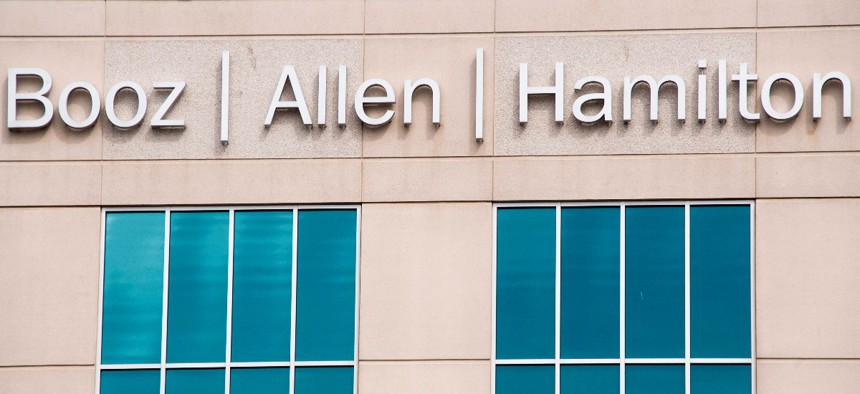Booz Allen touts record headcount growth in wake of settlement

The Booz Allen Hamilton logo as seen on a building in Annapolis Junction, Maryland. Jim Watson/AFP via Getty Images
Company leaders fielded questions from Wall Street on their agreement with the Justice Department, then moved onto other matters.
When it comes to speaking with investors, Booz Allen Hamilton leaders sound like they have already turned the page from its decision to settle allegations of improper billing related to its commercial and international contracts.
During Booz Allen's fiscal first quarter earnings call Friday, analyst question number one to chief executive Horacio Rozanski was about the agreement's potential impacts on the company's future business prospects.
The Justice Department announced the $377.5 million agreement with Booz Allen on July 21. Separate to that, Rozanski told analysts that the Securities and Exchange Commission has also concluded its investigation into the firm.
"We remain very close to our clients. We connect with them all the time. We've been very transparent throughout about all of this and our clients understand it and have put it into context," Rozanski said. "I don't believe... that this has affected our ability to win business or to execute our business, and we're now able to look ahead."
One way Booz Allen sought to do that was tout a record quarterly growth rate on the employee headcount front, a key metric the government services company regularly points to as directly correlated with growth and profitability.
McLean, Virginia-headquartered Booz Allen grew client-facing staff by 12.5% in the quarter compared to the prior year period, while total headcount increased 11.2% year-over-year. As of the fiscal first quarter's end on June 38: Booz Allen touted having 29,747 client-facing staff and 32,574 total employees.
Rozanski attributed those growth rates to Booz Allen's emphasis on streamlining the hiring lifecycle and making improvements to the experience of becoming a new employee. Booz Allen's emphasis on artificial intelligence in its strategy also applies to how it manages internal functions like hiring.
"We began by using somebody else's tool to go through all of our requisitions and make sure that it essentially read all the requisitions for biased language for things that we didn't want to have in there and to make us be the right kind of face to the market," Rozanski said. "We've now moved into another phase, which is for matching."
As Booz Allen views it: matching involves using AI as a tool to bring together information that helps employees decide where they want to take their careers, the training they need to make that happen and what future opportunities may exist.
Rozanski said the firm has "something in prototype that is showing tremendous upside" for its human capital function.
The company is looking at how AI can plan a role in all aspects of its business. "We're prioritizing high leverage areas first," he said.
Regarding how Booz Allen's government customers are looking at AI, Rozanski sees many agencies moving to demanding that technology capability versus mere interest in what it can do.
"I can't say this with absolute precision, but essentially, all of our largest contracts have some form of AI in scope or the possibility for AI in scope," Rozanski said. "I don't think our visionary clients would write a five- or 10-year contract now that does not include these capabilities, because we all know they're transformational."
Fiscal quarter revenue of $2.65 billion was 18% higher than the prior year period, while profit of $307 million showed a 21.5% year-over-year increase in adjusted EBITDA (earnings before interest, taxes, depreciation and amortization).
Booz Allen reported a total backlog of $31.3 billion as of the quarter's end with $17.3 billion of it funded, showing year-over-year increases of 9.3% and 22% respectively. The firm also touted a 1.24x book-to-bill ratio over the trailing 12 months to measure the rate of contract bookings to the backlog versus drawdowns to realize revenue.


